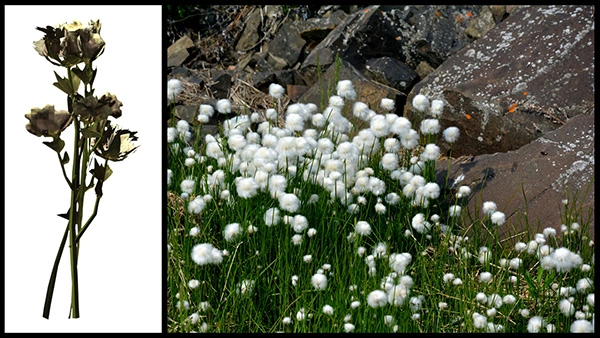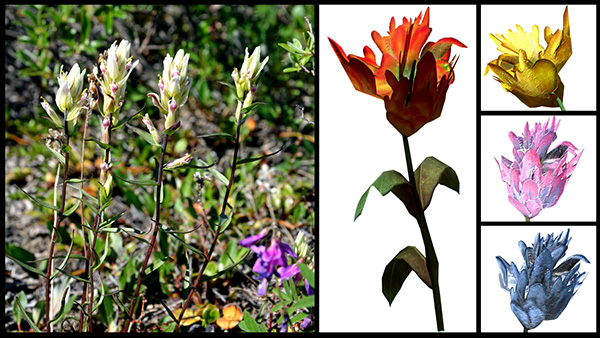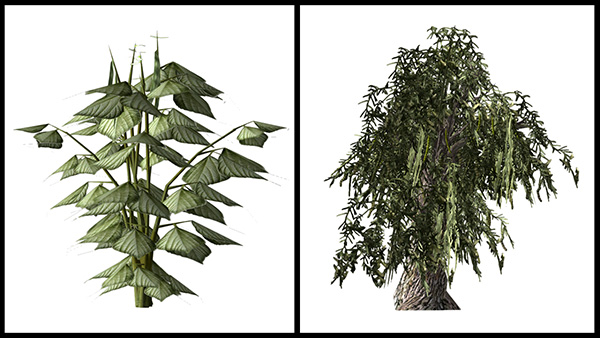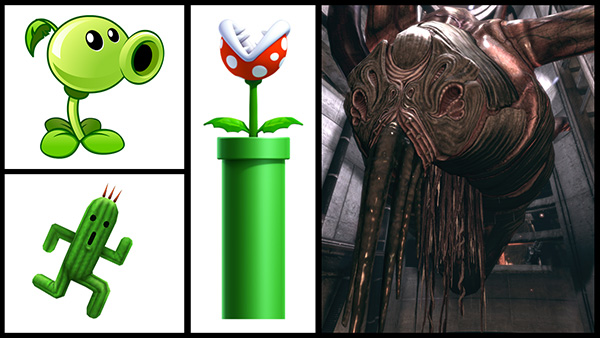Crouched down on the hilly tundra outside Whiterun, the Dragonborn spots their quarry. No, not a dragon, nor a lumbering mammoth, but a patch of tundra cotton, swaying gently in the breeze coming down the Throat of the World.
Plants have been antagonists, useful items and scenery in video games ever since Mario jumped over his first piranha plant. As a big RPG (role-playing game) fan, more than once I’ve been caught unaware (virtually) while inspecting a digital ecosystem.
Given the recent release of Fallout 4, a highly anticipated RPG, I thought it would be fun to look at the real-world inspirations behind some of these virtual plants.

Skyrim takes place in the titular northern province of Tamriel, the setting for the Elder Scrolls series. Previous Elder Scrolls games have featured the fungi-dominated island of Morrowind, or the temperate, mixed-hardwood climes of Cyrodiil. In both cases, the plants in the environment help to set the mood of the game by telegraphing to players a sense of fantasy and familiarity respectively.
Skyrim is no exception—this alpine and Arctic realm features many plants that are inspired by those found in our real-world polar regions, thus adding to the realism and helping transport the player on an Arctic adventure.

Some Skyrim plant species are direct copies of their real-world counterparts, like juniper (in-game juniper) and wheat. Some, like gleamblossoms, are completely fictional. Others are re-named versions of terrestrial species; for instance, you or I may recognize snowberries as holly.
Skyrim‘s mountain flowers—very, very similar to real-world Castilleja species—are easily distinguished based on flower colour. And in the game’s universe, they are additionally differentiated by chemotaxonomy: the differences in the health effects that they impart on the player indicate that different chemicals (secondary metabolites) are produced by each species.
Just like all real-world vascular-plant species, the virtual plants of Tamriel have been placed in different environments associated with that species, which enhances the realism of the virtual ecosystem. Aspiring e-botanists will have to search high and low to find them all; don’t worry, just like with real-life floras, high-quality “dot maps” of where they are located also exist for the Elder Scrolls series.

In Fallout: New Vegas, as with the other members of the Fallout series, the player navigates the wasteland of a parallel, post-apocalyptic Earth, surviving on their wits, resourcefulness and a steady diet of (mostly) irradiated plants. Many of these plants, such as white horsenettle (Solanum elaeagnifolium; in-game plant) and barrel cactus (Ferocactus sp.; in-game plant) are real species.

Plants populate many, many types of video games, sometimes as antagonists. While I’ve yet to see an ambulatory cactus on my field excursions, some fungal species actually do control plant hosts—not unlike the ancient Thorian in Mass Effect.
Whether friend or foe, plants will definitely find themselves in video games for a long time to come, healing player characters, being a thorn on your parties’ side, or simply providing a richer gaming experience.


Thanks for this article! One of my side projects from the past few years has been slowly compiling elder scrolls flora into sketches and notes, even including food, ingredients or just recognizable non-interactive plants and their real world counterparts . Really Happy to see I’m not the only plant nerd scoping out the botany of video games
Me too! I have been trying to grow a Skyrim garden IRL for years and am writing an article about it. Love this so much!